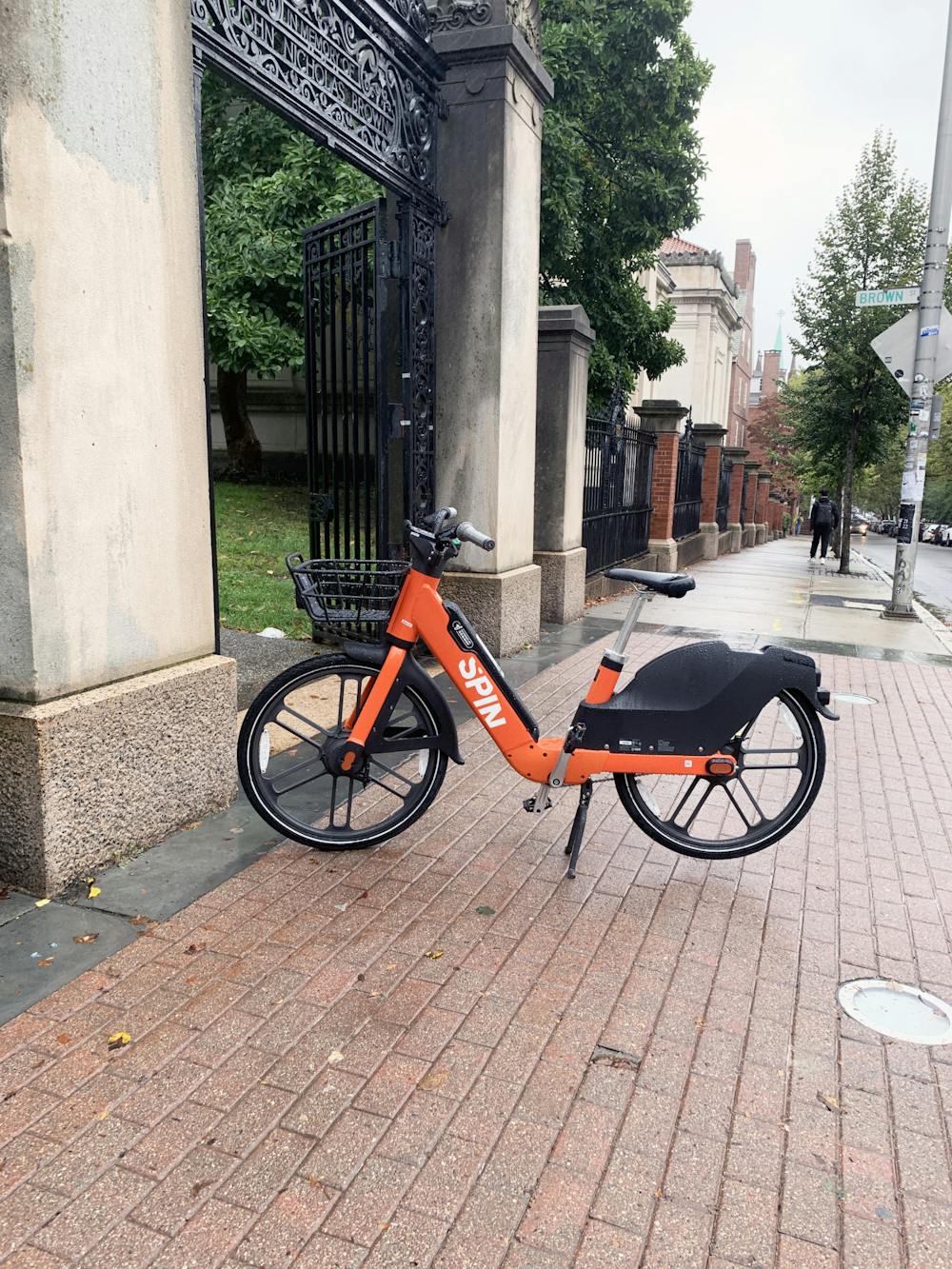The City of Providence saw in June the return of an electric bike rental program, this time operated by the electric bike- and scooter-sharing company Spin. The orange bikes have become an increasingly common sight around College Hill, but the Spin program, which aimed to put 400 bikes on Providence streets by September, has yet to reach that goal.
The goal of deploying 400 bikes by September has now been pushed back to October due to manufacturing delays, Andrew Grande, director of media relations for the Providence Mayor’s Office, wrote in an email to The Herald. But while Providence residents await the delivery of the additional bikes, the program’s current fleet has been operational since June.
Grande wrote that the Spin e-bikes and e-scooters offer “healthy, sustainable transportation options for Providence residents and increase access to transit across the City.” Specifically addressing accessibility, he said that the program includes ways for people lacking smartphones or credit cards to ride and provides discounted memberships to qualifying individuals.
The program offers “deep discounts” to anyone receiving government assistance to improve access to the bikes and scooters Spin operates, Liza Burkin, organizer of the Providence Streets Coalition, wrote in an email to The Herald.
Additionally, Grande noted that Providence chose to partner with Spin in part because the mayor’s office felt confident about Spin’s proposed program for shared micromobility.
Kurt Teichert, senior lecturer at the Institute for Environment and Society, wrote in an email to The Herald that micromobility programs like the Spin e-bike program “solve the ‘last mile problem’” associated with public transit use. This is an issue where people are more likely to use public transit if it gets them where they are going efficiently, but tend to refrain if they have issues getting from the end of a transit route to their destination.
Micromobility is “both an alternative and a complement to mass transit,” Burkin added.
Additionally, e-bikes allow public transit to more effectively compete with cars, a combination which could help reduce carbon dioxide emissions from personal automobile use, Teichert wrote.
The cost barrier to using e-scooters and e-bikes is also much lower than that for owning a car, Burkin added.
But Teichert said that while e-bikes compete with cars, the e-scooters accompanying them could replace walking, thereby leading to more energy use than a scenario lacking scooters.
Many of these elements of the bike program were noted by Grande, who wrote that the City’s interest in the program was at least in part due to the potential for easing traffic, increasing environmentally friendly transit usage and promoting healthy lifestyles.
While Teichert stated he maintained some initial skepticism about the health benefits of e-bikes, especially as compared to traditional bicycles, he recognizes the benefit of greater speed and lower exertion, which allows them to better compete with cars.
Especially because the 2019 termination of the JUMP e-bike program came on the heels of a number of safety and vandalism concerns, maintaining the safety of riders and the bikes themselves is key for the Spin program’s lasting success.
Members of the Providence Police Department and City government “proactively met with members of the Spin team” to discuss safety concerns prior to launch to try to avoid issues the previous program faced, Grande wrote.
Teichert noted that the Spin S-300 bikes’ locking mechanism does not as easily allow for the vandalism and unpaid ridership that was seen with the old JUMP program. The more effective locking mechanism is such that even with a cut cable, the rear wheel of the bike remains immobilized.
Another safety concern is the location of the bikes when not in use, which is something that often impedes pedestrian pathways and could pose an issue especially for those of limited mobility or visual acuity, according to Teichert. Usage by inexperienced riders is another concern Teichert expressed as a public safety issue.
Grande noted that to solve these issues, the City is relying on a combination of “respectful participation” of users and the work of the local Spin Operations teams to clear the e-bikes from blocking pedestrian paths.
Additionally, Teichert noted the City introduced the program on a zero-cost model, “so the City has not made capital investments in the bike share systems.” In fact, Spin pays a fee for e-bikes and e-scooters that are parked on City streets, he added.
But “the primary investment from the City is to improve cycling infrastructure,” he wrote. This aims to provide a separate, protected lane of travel for cyclists, distinct from that for automobiles as part of the Great Streets Initiative, which, according to the program’s website, aims to make Providence’s streets “safe, clean, healthy, inclusive and vibrant.”
With significant interest in the success of the program, the expected delivery of more bikes this month will mark the first chapter of the story of Spin e-bikes in Providence.





